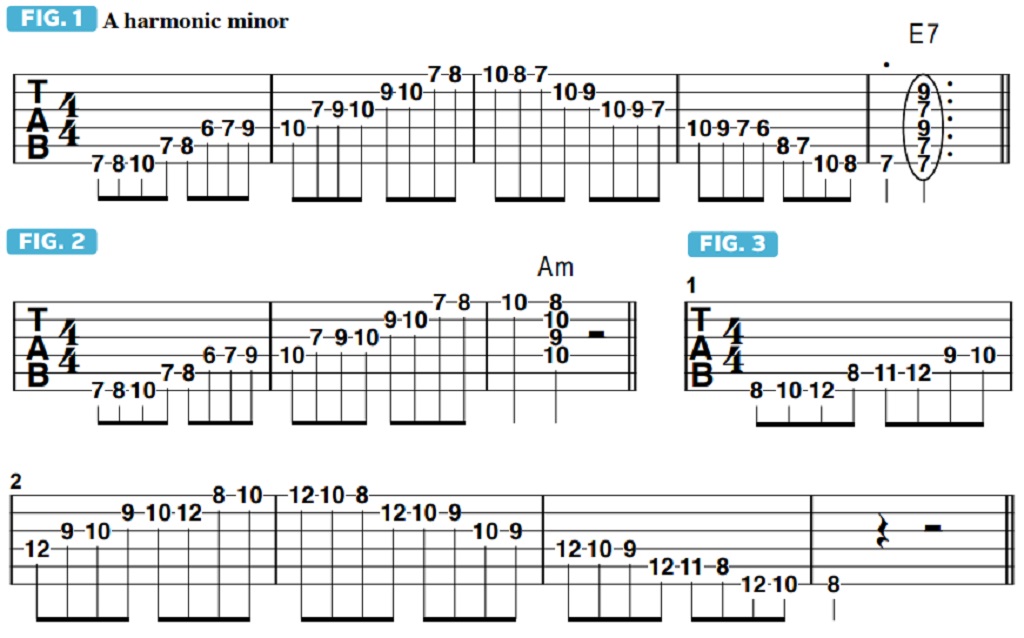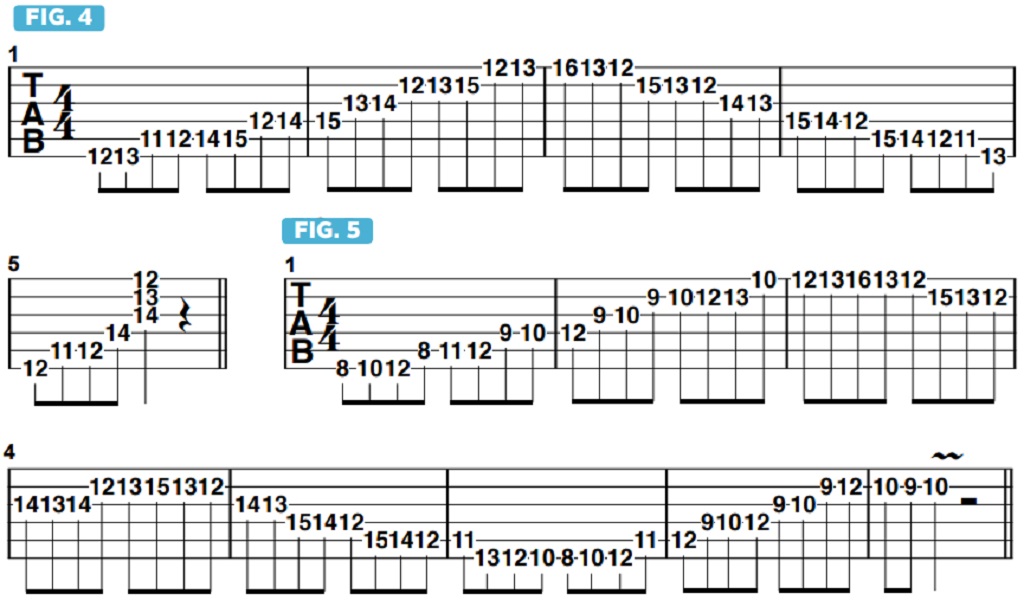Get to know a staple of gypsy jazz: the A harmonic minor scale
Thoroughly learning all positions of the scale will enable you to traverse the fretboard with total fluency
Last time, I introduced an essential scale for gypsy jazz, harmonic minor, which is intervallically spelled 1, 2, b3, 4, 5, b6, 7. In the key of A minor, the notes are A, B, C, D, E, F, G#.
To review, what sets harmonic minor apart from most other seven-tone scales is that there is a wide gap of an augmented 2nd (three half steps) between two of the notes, specifically between the b6 and the major 7th. This serves to give harmonic minor its unique sound, especially in regard to how it functions over the i (one minor) and V (five major) chords.
I generally rely on four different positions of A harmonic minor when I solo. Last month I demonstrated the first, which starts on the A root note on the low E string’s 5th fret, fretted with the index finger.
FIGURE 1 illustrates the second position I use, which sits primarily in 7th position; Here, the index finger shifts up to 7th position, and I end the phrase on the starting note, B, followed by the V7 chord, E7, which resolves back to the i, Am. Ending on the B note like this sets up the E7 chord nicely.

In FIGURE 2, I play the same sequence ascending, which culminates in an ideal position for playing an Am chord in 1st inversion, for which the 3rd, C, is in the bass.
Notice in this scale pattern that I play four notes on the D string, starting with my index finger on G# at the 6th fret, and then shift the finger up one fret to A. When I play the scale in 5th position, I use a similar shift, in this case on the high E string, sliding my index finger from the 4th fret to the 5th.
I constructed these scale patterns specifically to match chord positions that feel natural to me on the guitar. Oftentimes, I’ll vary the fingering slightly in order to move to the next lower or higher scale position.
It’s very important to study each scale position in depth, in order to develop the familiarity and freedom to move about the fretboard laterally like this.

FIGURE 3 moves up to 8th position, which requires some wide fret-hand stretches on the lower strings. Once you have this position memorized, experiment with note displacement and shifting, to venture into other fretboard positions. The last one is shown in FIGURE 4, which culminates in a 12th-position Am chord voicing.
You should memorize each position with a mind to moving outside a specific fretboard pattern here and there; for example, in FIGURE 5, I incorporate a high G# note on the high E string’s 16th fret into the pattern, followed by a shift back down the fretboard. FIGURE 6 offers another similarly developed example. Don't be too rigid or mechanical - always let your ears guide you.

Get The Pick Newsletter
All the latest guitar news, interviews, lessons, reviews, deals and more, direct to your inbox!









![Joe Bonamassa [left] wears a deep blue suit and polka-dotted shirt and plays his green refin Strat; the late Irish blues legend Rory Gallagher [right] screams and inflicts some punishment on his heavily worn number one Stratocaster.](https://cdn.mos.cms.futurecdn.net/cw28h7UBcTVfTLs7p7eiLe.jpg)
